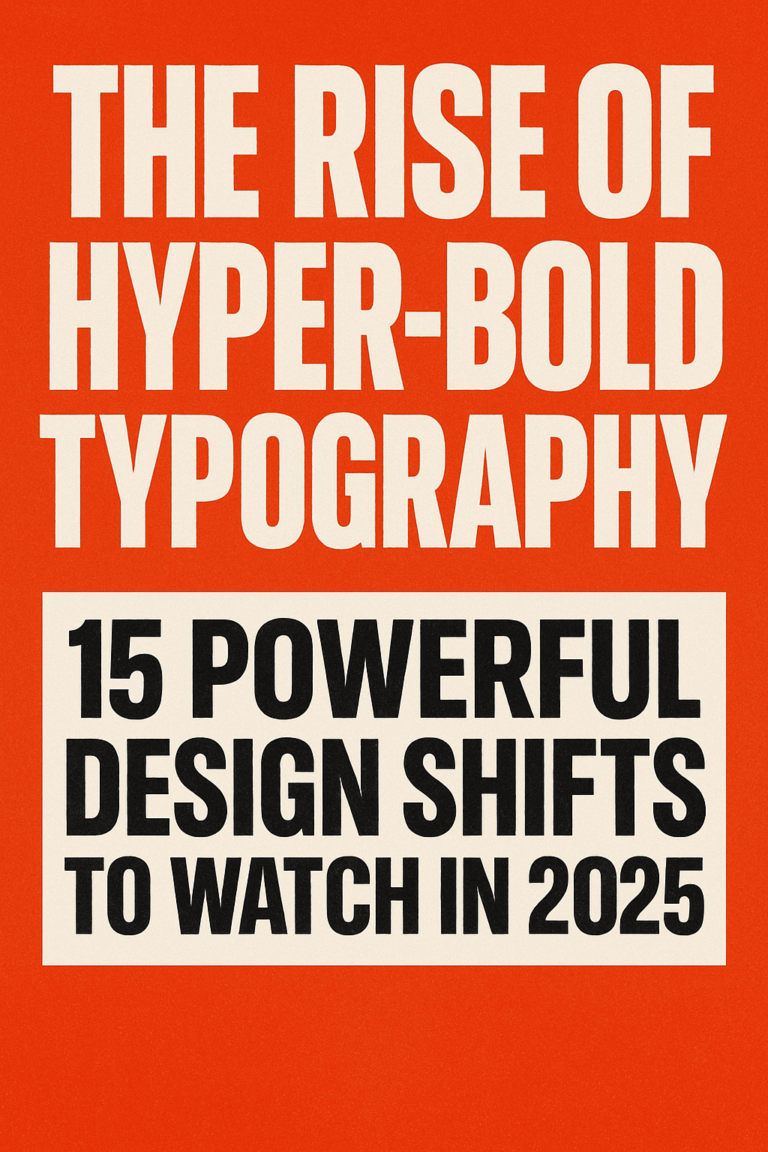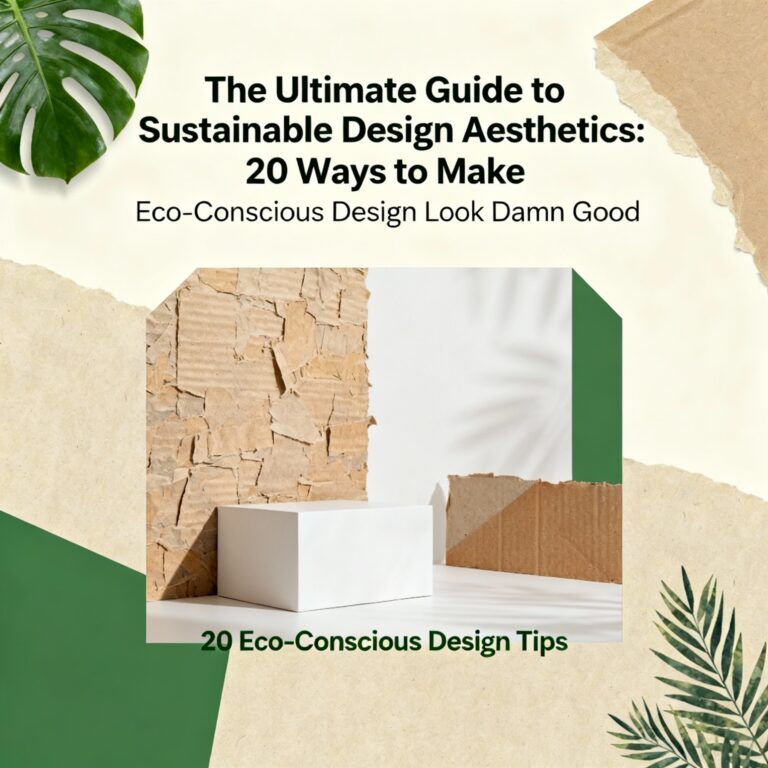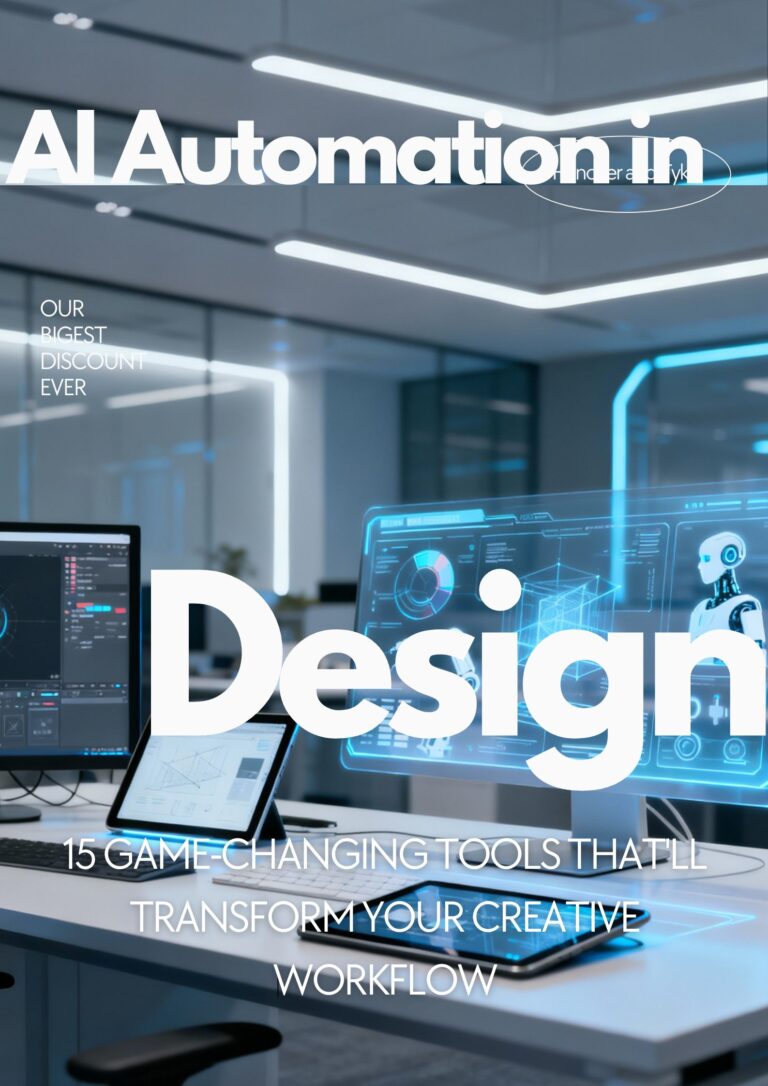
Introduction
When I first encountered minimalist design years ago, it struck me as simply « less stuff » – but I’ve since discovered it’s so much more than that. Minimalism isn’t just about empty spaces and monochrome palettes; it’s a thoughtful approach to design that celebrates intention, function, and clarity. In 2025, minimalist design continues to evolve, offering fresh perspectives on how we interact with our spaces and visual elements. Whether you’re a seasoned designer or simply someone who appreciates clean aesthetics, understanding current minimalist trends can transform how you approach your projects and living spaces.
What Is Minimalist Design, and Why Is It Popular?
Minimalist design is a philosophy centered around the concept « less is more, » focusing on simplicity, functionality, and intentional choices. It strips away unnecessary elements to highlight what truly matters. But why has this approach captured our collective imagination?
I believe minimalism resonates because it offers a visual breath of fresh air in our information-saturated world. It creates spaces that feel calm and ordered, designs that communicate clearly, and products that fulfill their purpose without excess. As our digital and physical environments become increasingly complex, the deliberate simplicity of minimalism feels like a welcome respite.
The popularity of minimalist design also stems from its versatility. From graphic design to architecture, minimalism’s principles adapt across disciplines while maintaining their core integrity. This adaptability has allowed minimalist design to remain relevant for decades while continuously evolving to reflect contemporary sensibilities.
How Minimalist Design Differs from Traditional Design Styles
Unlike traditional design styles that often embrace ornamentation, complex patterns, and decorative elements, minimalist design deliberately eliminates anything non-essential. Where traditional approaches might layer textures, colors, and details to create richness, minimalism finds depth through thoughtful restraint.
Traditional design might showcase craftsmanship through intricate details, while minimalism demonstrates mastery through perfect proportions and the careful consideration of negative space. Think of it this way: traditional design often tells stories through abundance, while minimalist design creates impact through absence.
This fundamental difference extends to the emotional experience as well. Traditional spaces often feel cozy through accumulation, while minimalist environments create comfort through carefully curated simplicity.
Key Principles of Minimalist Design
Before diving into current trends, it’s important to understand the foundational principles that guide minimalist design:
- Intentional simplicity – Every element serves a purpose; nothing is included without reason
- Negative space – Empty areas aren’t « unused » but deliberately incorporated to create balance
- Form follows function – Design choices prioritize purpose over decoration
- Limited color palette – Typically restricted to neutral tones with occasional controlled accents
- Clean lines – Preference for straightforward geometric forms over complex shapes
- Quality over quantity – Fewer high-quality elements rather than numerous lesser ones
- Thoughtful material selection – Materials chosen for their inherent beauty rather than embellishment
These principles provide the framework through which all minimalist design trends emerge and evolve.
Latest Minimalist Design Trends for 2025
1. Warm Minimalism
The days of cold, sterile minimalism are behind us. In 2025, we’re seeing a decisive shift toward « warm minimalism » – spaces that maintain minimalist principles while incorporating elements that add comfort and personality.
This trend embraces natural materials like wood, clay, and linen in their most authentic forms. Color palettes have expanded beyond strict black and white to include warm neutrals, terracottas, and subtle earth tones. Textures play a crucial role, with designers incorporating tactile elements that invite touch while maintaining visual simplicity.
I’ve found that warm minimalism resonates with clients who previously found minimalist spaces too austere. By softening edges and incorporating organic elements, this approach makes minimalism more accessible without compromising its core principles.
2. Sustainable Minimalist Design
Sustainability has moved from being an « add-on » consideration to a fundamental aspect of minimalist design. This alignment makes perfect sense – both minimalism and sustainability advocate for thoughtful consumption and quality over quantity.
In 2025, sustainable minimalist design emphasizes:
- Biophilic elements – Connecting to nature through materials, views, and indoor plants
- Circular design principles – Creating products designed for longevity, repair, and eventual recycling
- Local and ethical sourcing – Prioritizing materials and products with minimal environmental impact
- Energy efficiency – Designing spaces and products that minimize resource consumption
The sustainable minimalist approach extends beyond materials to encompass the entire lifecycle of a design, from conception to eventual repurposing.
3. Digital Minimalism in UI/UX
As our digital interactions become increasingly complex, minimalist design principles have become essential in creating usable, accessible interfaces. In 2025, digital minimalism focuses on reducing cognitive load through:
- Thoughtful hierarchy – Guiding users naturally through content without overwhelming them
- Functional animation – Using motion not as decoration but to enhance understanding
- Intentional white space – Creating breathing room that improves comprehension and focus
- Reduced color palettes – Limiting colors to enhance usability and maintain visual cohesion
Companies like Apple continue to champion this approach, but we’re seeing more brands embrace digital minimalism not just for aesthetics but for improved user experience across all platforms.
4. Maximalist Minimalism: The Controlled Contrast
One of the most interesting developments in 2025 is what I call « maximalist minimalism » – the strategic incorporation of bold, even dramatic elements within an otherwise minimalist framework. This isn’t about compromising minimalist principles but rather using contrast as a powerful design tool.
This might take the form of:
- A single vibrant art piece in an otherwise neutral space
- One bold architectural feature amidst clean lines
- A moment of complex pattern within a simple composition
This approach recognizes that attention is naturally drawn to contrast, and by controlling exactly where and how that contrast appears, designers can direct focus with remarkable precision.
5. Minimalist Architecture with Emotional Resonance
Minimalist architecture has evolved beyond the « white box » stereotype to create spaces with genuine emotional depth. In 2025, architects are exploring how minimalist principles can create spaces that feel not just visually clean but emotionally resonant.
This trend incorporates:
- Thoughtful lighting design that changes throughout the day
- Strategic use of height and volume to create spatial experiences
- Careful consideration of how people move through spaces
- Incorporation of views and connections to surroundings
Japanese architects have long excelled at this approach, and we’re now seeing their influence spread globally as designers seek to create minimalist environments that feel meaningful rather than merely simplified.
6. Neo-Primitive Minimalism
Drawing inspiration from ancient crafts and indigenous design principles, neo-primitive minimalism celebrates the elegance of traditional techniques while maintaining contemporary minimalist sensibilities.
This trend features:
- Hand-crafted elements with visible evidence of the maker
- Natural, minimally processed materials
- Forms inspired by ancient tools and vessels
- Techniques passed down through generations
What makes this trend distinctly 2025 is the thoughtful fusion of these timeless approaches with modern minimalist contexts, creating spaces and objects that feel both ancient and contemporary.
How to Incorporate Minimalist Design into Your Home or Workspace
Embracing minimalist design doesn’t require a complete overhaul of your space. Here are some approachable ways to incorporate these trends:
- Start with intentional editing – Rather than adding minimalist elements, begin by removing items that don’t serve a purpose or bring you joy.
- Focus on quality over quantity – Invest in fewer, better pieces rather than multiple mediocre ones.
- Create breathing room – Allow negative space around your remaining items to let them stand out and be appreciated.
- Establish a cohesive color palette – Limit your color scheme to 2-3 main colors with 1-2 accent colors.
- Incorporate natural materials – Add wood, stone, or plants to bring warmth to minimalist spaces.
- Consider form and function – Choose items that serve their purpose beautifully without unnecessary embellishment.
- Manage hidden clutter – Create simple organizational systems that keep necessary but visually distracting items out of sight.
Remember that minimalism isn’t about deprivation but about creating space for what truly matters to you.
The Role of Color in Minimalist Design Trends
Color in minimalist design has evolved far beyond the stereotypical black and white. In 2025, we’re seeing sophisticated approaches to color that maintain minimalist principles while creating visual interest:
Monochromatic Depth
Rather than flat applications of a single color, designers are exploring the full range of a color’s values – from lightest to darkest – creating subtle dimension while maintaining color cohesion.
Muted Naturals
Soft, slightly desaturated colors drawn from nature – clay, sand, moss, stone – provide gentle variation while maintaining the calm quality of minimalist spaces.
Strategic Color Moments
Precisely placed vivid colors create focal points within otherwise neutral compositions, directing attention and adding emotional energy where desired.
Tonal Harmony
Collections of colors with similar undertones create sophisticated palettes that feel cohesive without being monotonous.
The key to color in minimalist design isn’t necessarily using less color but using color with greater intention and control.
Sustainability and Minimalist Design: A Natural Partnership
Sustainability and minimalism share fundamental values – both prioritize thoughtful consumption, quality craftsmanship, and longterm thinking. In 2025, this natural alignment continues to strengthen through:
Materials Innovation
Sustainable materials that maintain minimalist aesthetics have expanded beyond reclaimed wood to include innovative options like mycelium composites, recycled textiles, and bio-based alternatives to plastic.
Repair-Focused Design
Products designed for easy maintenance and repair align perfectly with minimalism’s quality-over-quantity ethos.
Energy Efficiency
Minimalist architecture increasingly incorporates passive design principles that reduce energy consumption while maintaining clean aesthetics.
Multi-Functional Design
Spaces and products that serve multiple purposes reduce resource consumption while supporting minimalist principles of efficiency.
The future of minimalist design is inherently sustainable, moving beyond aesthetic choices to embrace responsible creation and consumption.
Examples of Minimalist Interior Design Elements
To illustrate these trends in practice, here are some specific elements that exemplify minimalist interior design in 2025:
- Built-in storage solutions that disappear into walls, eliminating visual clutter while providing necessary function
- Multi-functional furniture like coffee tables with hidden storage or sofas that convert to guest beds
- Statement lighting fixtures that serve as sculptural elements while providing efficient illumination
- Thoughtfully placed mirrors that amplify natural light and create spatial illusions without adding visual complexity
- Indoor-outdoor connections through large, clean-lined windows that frame nature as living art
- Single statement pieces – whether an art piece, distinctive chair, or architectural feature – that provide focal points
- Textural contrasts between smooth and tactile surfaces that add interest without pattern or color variation
- Hidden technology that maintains minimalist aesthetics while providing modern convenience
[Insert image of a minimalist living room showing built-in storage, natural materials, and clean lines here]
Minimalist Design in Branding and Marketing
Businesses increasingly recognize the power of minimalist design to cut through visual noise and communicate clearly. In 2025, minimalist branding focuses on:
Distinctive Simplicity
Rather than competing with more visual elements, brands distinguish themselves through carefully refined simplicity that becomes instantly recognizable.
Mindful Typography
Text isn’t just information but a core design element, with typography choices that reflect brand personality while maintaining readability.
Strategic Negative Space
Empty areas aren’t treated as unused real estate but as deliberate components that frame and emphasize what matters.
Cohesive Systems
Rather than isolated design pieces, minimalist branding creates cohesive systems that maintain integrity across all touchpoints.
Companies like Apple and Muji have long championed minimalist branding, but we’re now seeing this approach adopted across industries, from luxury fashion to financial services.
Best Tools and Software for Creating Minimalist Designs
For those looking to create minimalist designs, certain tools and software stand out for their ability to support this approach:
| Tool/Software | Best For | Key Features for Minimalist Design |
|---|---|---|
| Figma | UI/UX Design | Component-based design system creation, clean interface |
| Adobe Illustrator | Vector Graphics | Precision control, geometric shape creation |
| InDesign | Print Layout | Grid systems, white space management |
| SketchUp | 3D Modeling | Clean architectural visualization |
| Procreate | Digital Illustration | Layer management, refined line work |
| Webflow | Web Design | Code-free responsive design with clean output |
| Notion | Content Organization | Customizable minimalist documentation |
| Miro | Collaborative Planning | Clean wireframing and concept development |
The best tools for minimalist design share certain qualities: they offer precise control, support systematic thinking, and don’t impose their own visual style on the work.
The Psychological Benefits of Minimalist Design
The appeal of minimalist design goes beyond aesthetics. Research consistently shows that ordered, simplified environments offer significant psychological benefits:
- Reduced cognitive load and mental fatigue
- Decreased stress and anxiety levels
- Improved focus and attention
- Enhanced sense of control over one’s environment
- Increased appreciation for quality over quantity
These benefits explain why minimalist design endures beyond passing trends – it responds to fundamental human needs for clarity and calm in an increasingly complex world.
Conclusion: The Evolving Future of Minimalist Design
As we look toward the future, minimalist design continues to prove its staying power not as a rigid dogma but as an adaptable philosophy. The trends we’re seeing in 2025 – warm minimalism, sustainable practices, strategic contrast, emotional depth, and digital simplicity – all represent evolutions of core minimalist principles rather than departures from them.
What makes minimalist design so enduring is its ability to respond to contemporary needs while maintaining its essential focus on what matters most. In a world of increasing complexity and distraction, the clarity and intentionality of minimalism feels not just aesthetically pleasing but necessary.
Whether you’re a designer looking to refine your approach or someone seeking to create more thoughtful spaces in your life, minimalist design offers valuable principles that transcend passing trends. By focusing on quality over quantity, function alongside form, and the power of deliberate choices, minimalism continues to show us that sometimes the most impactful thing we can do is take something away.
I encourage you to consider how these minimalist trends might influence your next project or living space. Which elements resonate with you? How might intentional simplicity create more room for what truly matters in your work and life?
Meta Description (155 characters): Discover the latest minimalist design trends for 2025 – from warm minimalism to sustainable approaches, learn how thoughtful simplicity transforms spaces and visuals.


